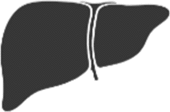Table 2.
Exercise prescription recommendations for MAFLD
| Management goal | Aerobic only | Resistance only | Practical considerations | |
|---|---|---|---|---|
 |
Reduction in hepatic steatosis |
Moderate to vigorousa intensity aerobic (e.g. brisk walking, jogging, cycling)b exercise for at least 135 min per week of moderate intensity across 3–5 days per week; ideally progressing to 150–240 min per week. Strong evidence And/or High-intensity interval training (HIIT) involving 1–5 high-intensity intervalsa of 2–4 min interspersed with 2–3 min lower-intensity recoveryc between intervals on 3–5 days per week. Moderate evidence |
Insufficient evidence |
Aerobic exercise and/or HIIT should be prioritised for the management of hepatic steatosis The benefits of resistance training in isolation are unclear. Resistance training should be included in addition to the recommended volume of aerobic exercise but not instead of it. Clinicians aiming to prescribe resistance training to individuals with cardiometabolic disorders may find appropriate resources elsewhere [137, 138] |
 |
Reduction in central adiposity (waist circumference as a surrogate for VAT) | Moderate to vigorousa intensity aerobic (e.g. brisk walking, jogging, cycling)b exercise for at least 150–240 min per week of moderate intensity across 3–5 days per week. Weak–moderate evidence | Insufficient evidence |
As little as 60 min of weekly vigorous intensity activity may provide equivalent benefit Practical considerations for resistance training as per hepatic steatosis |
 |
Improvement in cardiorespiratory fitness | Moderate to vigorousa intensity aerobic (e.g. brisk walking, jogging, cycling)b exercise for at least 135 min per week of moderate intensity across 3–5 days per week Strong evidence | Insufficient evidence | Emerging evidence suggests HIIT may equally improve cardiorespiratory fitness in people with MAFLD |
 |
Weight loss | Moderate to vigorousa intensity aerobic (e.g. brisk walking, jogging, cycling)b exercise for at least 150–240 min per week of moderate intensity across 3–5 days per week. Strong evidence | Insufficient evidence |
Important to appropriately communicate the modest magnitude of weight loss (~ 2–3 kg or ~ 1.5%) expected with exercise intervention of this volume in isolation Practical considerations for resistance training as per hepatic steatosis |
MAFLD metabolic-associated fatty liver disease, HIIT high-intensity interval training, VAT visceral adipose tissue, VO2R rate of oxygen consumption reserve, HRR heart rate reserve, RPE rating of perceived exertion, VO2peak peak rate of oxygen consumption
aRecommended intensity based on the research papers on which the evidence was based. Moderate: 40–60% of R or HRR, or 12–13 RPE; vigorous: 60–84% of R or HRR, or 14–16 RPE; high intensity: ≥ 85–100% peak or ≥ 15 RPE
bThere is no evidence for comparative efficacy of these aerobic exercise training modalities
cNo studies have used passive recovery periods
